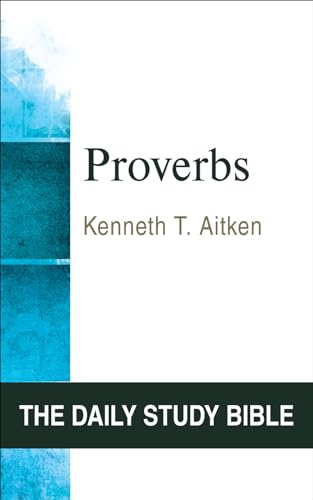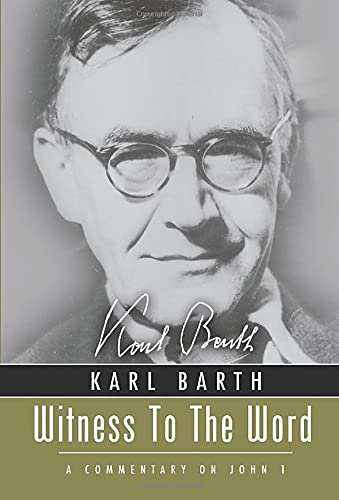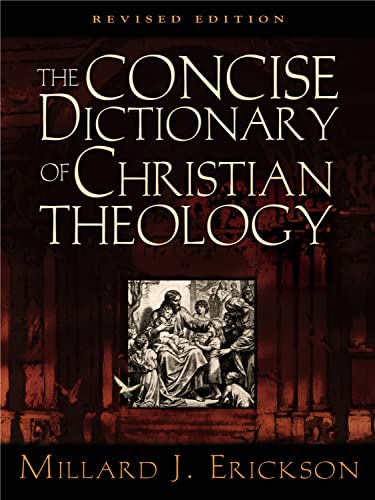Volume 13 - Issue 2
Theological trends in Asia
By Bong Rin RoThe imposition of Western theology in Asia
‘Theological ideas are created on the Continent (Europe), corrected in Great Britain, corrupted in America, and crammed into Asia,’ said one theologian. In Asia there are approximately 1,000 theological institutions including Bible schools, the majority of them established by Western missionaries. Since 1945 thousands of Asian students have gone to the West for their graduate theological education and many of these returning to Asia have introduced Western theologies at different theological schools throughout Asia.
Nevertheless, because of rising nationalism and the reassertion of traditional values in Asia since the end of World War II, Asian theologians have been seeking liberation from Western theologies in order to make the gospel more relevant to their own life situations.
The proliferation of Asian theologies
Many Asian theologies have appeared in the theological arena: Pain of God Theology (Japan), Waterbuffalo Theology (Thailand), Third Eye Theology (for the Chinese), Ying Yang Theology (Chinese and Korean), Theology of Change (Taiwan), Minjung Theology (Korea), as well as Indian and Sri Lankan Theology. The proliferation of Asian theologies has escalated markedly since the 1960s and will continue to multiply in the future; already these theologies have made a great impact. They have also caused conflict and confusion in theological institutions and Christian churches in Asia.
Asian theologies can be grouped into four categories:
Syncretism
Since the Programme Unit on Faith and Witness of the World Council of Churches (WCC) has sponsored a number of religious dialogues with the leaders of other living religions, the increasing tendency towards syncretism in Asian theology has created alarm in the Asian church. For example, Raymond Panikkar, in his book The Unknown Christ of Hinduism (1964), stressed that Christ already dwells in the heart of a Hindu and that the mission of the church is not to bring Christ to the Hindu but to bring Christ out of him.
Accommodation theology
Accommodation is another subtle attempt to contextualize theology in Asia. Just as a hotel or a family accommodates a guest, so theological accommodation considers prevailing customs and religious practices of another culture and accommodates good ideas from other religions.
Dr Kosume Koyama, a former Japanese missionary professor at Thailand Theological Seminary in Chiang Mai, in his Waterbuffalo Theology (1970), opposes syncretism for not doing justice to both parties. He advocates accommodation instead. Dr Koyama believes that one cannot mix Aristotelian pepper with Buddhist salt in the North Thailand theological ‘kitchen’. One must, therefore, emphasize good Neighbour-ology rather than mere Christology. Dr Koyama believes that every religion has positive as well as negative points and that Thai Christians must accept the positive elements of Buddhism in Thailand in order to change their life-style.
Dr Batumalai Sadayandy, a Malaysian Anglican priest, in his doctoral thesis at Birmingham University in the United Kingdom published a book, A Prophetic Christology for Neighborology (1987), and voiced the similar concept of accommodating the Malaysian Muslim context in terms of ‘Neighborology’.
Yet the question of where to draw the line between syncretism and accommodation depends on whether the person is willing to accept the unique revelation of God in Jesus Christ and in the Scriptures in his accommodation. A person’s answer to a question such as, ‘Do Buddhists and Muslims need to be converted to Jesus Christ for the forgiveness of their sins?’ will reveal whether or not he believes that Jesus Christ is the only way to God.
Situational theology
Another type of Asian theology derives directly from a particular situation. This situational theology may not be in agreement with the biblical and historical doctrines of the Christian church but speaks to concrete situations in Asia.
Dr Kazoh Kitamori’s Pain of God Theology in Japan is an excellent illustration. He tried to demonstrate to the suffering people in Japan after their defeat in World War II that the God revealed in the Bible is the God of suffering and pain who could identify with the suffering Japanese.
The Liberation Theology of Latin America has influenced Asian theologians and been expressed in different forms: the Minjung Theology in Korea, and Liberation Theology in India and the Philippines. The Christian Conference of Asia (CCA), which represents the Asian arm of WCC, has been the chief proponent of Liberation Theology in Asia, focusing on human rights, poverty, injustice and nuclear war.
For example, it is not uncommon to read in ecumenical journals and magazines such as the CCA News, CTC (Commission on Theological Concerns) Bulletin, and East Asia Journal of Theology critical comments against the governments of South Korea, Taiwan, the Philippines, and other countries for violations of human rights. And yet, it is interesting to notice the virtual absence of any critical comments against the Singapore government in the same magazines, because the main office of CCA is located in Singapore.
The Minjung (Masses of People) Theology is a form of situational theology in South Korea developed to deal with socio-political issues in the country. The present religious situation in South Korea cannot be fully understood apart from the impact of the Minjung Theology. The Minjung Theology as a Korean version of liberation theology takes into consideration the cries and groans of the suffering people known as ‘han’, because the Minjung (masses of People) are politically oppressed and powerless and economically exploited.
Dr Kim Yong Bock, Director of the Christian Institute for the Study of Justice and Development, edited a book, Minjung Theology: People as the Subjects of History (1981). This book is an outcome of a Theological consultation on Minjung Theology sponsored by the Theology Commission of the Korea NCC in October 1979.
In ‘Theology and the Social Biography of the Minjung’, in CTC Bulletin (April 1985), Dr Kim pointed out that the suffering of the Messiah must be understood politically and historically in that he suffered and the minjung suffered under the unjust political-religious-social power of the rulers of their time. Christ’s suffering is more than just spiritual suffering, as Dr Kim explained:
Christian theology has traditionally underestimated the seriousness of social evil, a mistake caused by its attempt to understand sin and evil in individual, spiritual or metaphysical terms. It is only in recent times that serious political character has been found in sin and evil (p. 74).
Likewise, the resurrection of the Messiah, according to Dr Kim, also provides aspirations of the Minjung, i.e., the resurrection movement of the minjung and the participation of the resurrection community in the minjung movement. Therefore, the church must initiate its witness in society to protect the poor and the weak lest she loses her historical validity.
Scores of ecumenical church people and Roman Catholic priests who have been affected by Minjung Theology and actively participated in anti-government demonstrations were arrested.
The Korean NCC organized the Human Rights Department; and consequently, the NCC-related denominations have organized their own Human Rights Committees that have inflamed the human rights issues by holding prayer meetings and rallies at the local church level for the ‘prisoned saints’ and against the use of tear gas by the riot police.
It is unfortunate that the foreign press, particularly the ecumenical denominational press in the West, overstated the religious issue in Korea as though the whole Korean church had risen against the South Korean government.
Biblically oriented Asian theology
There has, alongside and in response to the theologies we have described, been a continuing strong tradition of more conservative and evangelical theology in Asia. This is represented, for example, by the Asia Theological Association (ATA), which held a consultation on ‘Contextualization: Asian Theology’ in Seoul, Korea, August 23–31 1982, with 85 evangelical theologians from 17 countries. The Bible and Theology in Asian Contexts (1984) was published as an outcome of this Consultation. The Third World Theologians’ Consultation followed right after the ATA consultation in Seoul with 50 delegates and 33 observers from Asia, Africa, the Caribbean and Latin America to deal with the same question of contextualization in the Third World.
At the Asian theologians’ consultation, The Bible and Theology in Asia Today: Declaration of the 6th Asia Theological Association Theological Consultation was adopted. This Declaration warned of the danger of syncretism and universalism in Asian theology. It encouraged Asian theologians to give careful thought concerning contextualization and Asian theology, and circumscribed the area for evangelical theologians where they could exercise contextualization. Evangelical theologians have a set of presuppositions in their faith such as the inerrancy of the Scriptures, the uniqueness of Christ, substitutionary atonement and missiological objectives in theology, etc., which set a basis for making the gospel relevant in each culture.
The task of Asian theology
The West has its own theological formulations derived from its own cultural background—Calvinism, Arminianism, death of God, etc. Yet in Asia the historical and cultura background is quite different from that of the West and demands careful attention from Asian Christians to their own cultures in order to make the gospel relevant to their life situation.
Some of the issues we are facing today are Communism, poverty, overpopulation, hunger, suffering, war, demon possession, bribery, cheating, idolatry, ancestor worship, caste system, secularism, and the resurging Asian religions of Buddhism, Islam and Hinduism. Asian theologians must grapple with these issues and produce Asian theology that wrestles with these problems, yet being faithful to the historic teachings of the Scriptures over the centuries.
More particularly, the task of Asian theology, and of evangelical theology in particular, is threefold: first, they must search the Scriptures and provide joint guide-lines to the grass-root churches on key controversial issues such as Christian responses to socio-political situations in Asia. Foi example, Christian young people are confused as to how they should express their Christian faith on socio-political issues or whether they should participate in student demonstrations against the government.
Secondly, they should encourage the Asian church to adopt a holistic approach in ministry by caring for the needs of society. Evangelical churches have been often criticized by Christians as well as non-Christians for their lack of social concern.
Thirdly, they must emphasize that the priority of the church is evangelism and mission in this vast continent of Asia which has only 3% Christian population in the midst of three billion people, i.e. 60% of the world’s population.
God is still at work in the Asian church, giving continuing growth even in the midst of confusion, violent demonstrations, and many unsolved problems in society and within the church.
Bibliography
G. H. Anderson (ed.), Asian Voices in Christian Theology; D. J. Elwood (ed.), What Asian Christians Are Thinking; D. J. Elwood and E. P. Nakpil (eds.), The Human and the Holy; John C. England (ed.), Living Theology in Asia Today; Charles H. Germany, Protestant Theologies in Modern Japan; Kim Yong Bock (ed.), Minjung Theology; K. Kitamori, Theology of the Pain of God; K. Klostermaier, Hindu and Christian in Vrindaban; Wing Hung Lam, Chinese Theology in Construction; C. Michalson, Japanese Contributions to Christian Theology; Bong Rin Ro & Ruth Eshenaur (eds.), The Bible & Theology in Asian Contexts; Vinay Samuel & Chris Sugden (eds.), Sharing Jesus in the Two Thirds World; C. S. Song, Third Eye Theology; Rodrigo Tano, Theology in the Philippines Setting.
Bong Rin Ro
Executive Secretary of the Asia Theological Association and Dean of the Asia Graduate School of Theology






